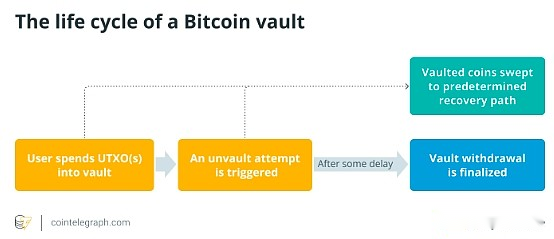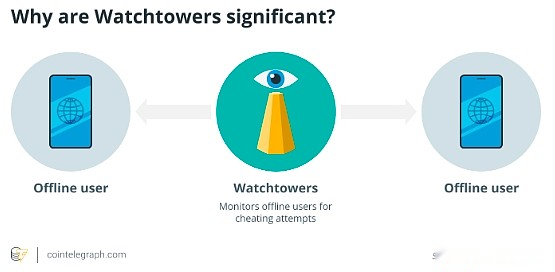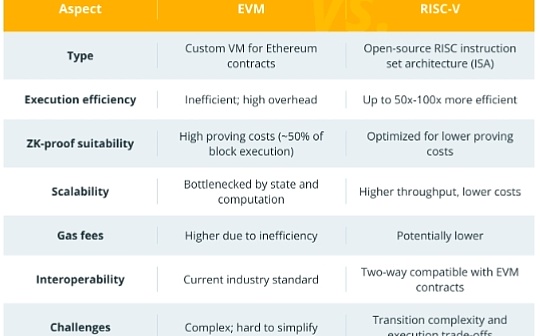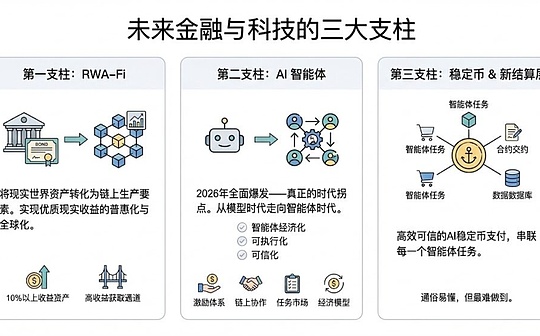
Author: Onkar Singh, CoinTelegraph; Compiled by: Wuzhu, Bitchain Vision
1. What is OP_VAULT?
OP_VAULT is a feature that adds extra security to Bitcoin, helping to prevent its stolen or unauthorized access.
The decentralized nature of Bitcoin has completely changed the digital economy.Nevertheless, as its use grows, so does the need for enhanced security.This is where OP_VAULT comes in, an innovative feature that introduces a mechanism called “contract” to provide greater security and flexibility.
In Bitcoin, “OP” stands for “opcode” or “code”.Opcodes are part of the Bitcoin scripting language, representing a single command or instruction that tells the blockchain how to process transactions.These codes enable bitcoin scripts to add functionality and execute rules.For example, OP_CHECKSIG verifies digital signatures, while OP_RETURN allows data to be embedded on the blockchain.The “OP_” prefix is the standard prefix for these commands, making it easy to quickly identify them in scripts.
But what is the contract in Bitcoin?
A contract in Bitcoin is a rule or condition that stipulates how funds are used.In addition to the standard one-time authorization token use, the contract also adds ongoing constraints, creating a structure that must be followed even in multiple transactions.This means that the contract ensures that the tokens are still protected by certain rules over time, thereby enhancing security and achieving unique spending conditions.
So, where is the vault suitable here?
The vault is a practical form of a covenant that focuses on simplifying daily use while adding additional protections to prevent unauthorized spending.
The working principle of the vault is as follows:
-
Set up a vault:To ensure the security of funds, users put funds into the vault and set up monitoring processes to observe the blockchain.
-
Outbound process:If you try to withdraw funds (called “outbound”), you will enter a waiting period, which gives the vault owner time to respond.
-
Assignment mechanism:If the request is unexpectedly withdrawn, the owner can initiate an “assembly” to pull the funds back to the secure account and prevent unauthorized spending.Callback is a security mechanism that allows users to recover or “return” funds when faced with the danger of unauthorized spending.
Note: In Bitcoin, Watchtower is a monitoring system designed to help protect users’ funds, especially when it comes to advanced features such as vaults or payment channels (such as those used in Lightning Networks).Watchtowers continuously monitors the blockchain for any suspicious or unauthorized activity involving user funds and can take action if such activity is detected.
2. Who introduced OP_VAULT and its development through BIP
OP_VAULT is part of a broader trend in Bitcoin, namely the introduction of more advanced features through the Bitcoin Improvement Proposal (BIP), a formal document for making changes or improvements to the Bitcoin network.
Bitcoin developer and researcher James O’Beirne proposed OP_Vault in 2023, see BIP 345 for details.The proposal aims to create a structured approach to safely store bitcoin using vaults.O’Beirne’s work on OP_Vault is based on early advancements such as OP_CHECKTEMPLATEVERIFY (CTV), and has played an important role in shaping Bitcoin’s contractual framework.
It is worth noting that BIP-119, proposed by Jeremy Rubin (bitcoin developer, researcher and advocate), introduced OP_CHECKTEMPLATEVERIFY, which laid the foundation for OP_Vault by allowing a secure vault structure without complex key management.
3. How does OP_Vault work?
Features such as OP_CHECKTEMPLATEVERIFY (CTV) make it possible to use vaults without complex settings such as storing pre-signed transactions or managing temporary keys.
With CTV, the conditions and potential transactions of the vault are pre-calculated and “locked” on the blockchain, making it easy to monitor and manage funds without the need to store additional sensitive data.This greatly reduces the risks associated with the loss of critical information or operational complexity.
Key components of OP_Vault
The OP_Vault setting has three basic elements:
-
Recovery path:This is a backup address that can boot funds when needed, usually protected by strict conditions such as offline or multi-signature wallets.All vaults that share the same recovery path can be batch-managed, which is useful when dealing with multiple vaults.
-
Cancel the vault key:This key allows the process of canceling the vault (trying to spend from the vault) to begin.Nevertheless, even if the attacker gains access to the key, they cannot steal funds immediately, because if detected in time, they can stop outbound and redirect to the recovery address.
-
Outbound target:This is the final destination of funds after delays in outbound delivery.The goals are flexible and can include various destinations (including amounts), support partial cancellation of vaults and even creation of new vaults.
4. How to use Bitcoin Vault
Create a vault to safely store Bitcoin, deposit funds, set recovery options and monitor with Watchtower; trigger callbacks if needed to recover funds and keep funds safe.
-
Create a vault:Create a vault address configured with a contract using a wallet or service that supports Bitcoin vaults.This is where your Bitcoin will be stored securely.
-
Deposit Bitcoin into the vault:Sending Bitcoin to a vault address is similar to sending Bitcoin to a regular wallet address.Vaults ensure additional security through specialized rules.
-
Set recovery and security options:Choose a recovery address (secure backup location) for your Bitcoin.This can be an offline wallet or a multi-signature setup for additional protection.Alternatively, configure a Watchtower to monitor your vault for unauthorized access attempts.
-
Extract from the vault:To access your funds, you must go through a process of canceling the vault, which usually requires delays to ensure safety and allow time for intervention if necessary.

If something goes wrong and you need to recover your bitcoin from the vault, the process is simple, but requires a few extra steps:
-
Detect unauthorized activities:Watchtower or you noticed if someone tried to access your Bitcoin without permission.
-
Trigger callback:Use the callback feature to send funds to a secure recovery address.Watchtower can do this for you automatically, or you can do it manually by broadcasting callback transactions using your wallet or service.
-
Bitcoin is safe again:Once the callback is triggered, funds are transferred to your recovery address, ensuring they are protected.

5. Advantages and limitations of OP_Vault
OP_Vault improves Bitcoin security by simplifying key storage and enabling batch recovery management, although it limits flexibility in fixed destinations and lacks batch cancellation capabilities.
The OP_Vault method provides several advantages for Bitcoin security:
-
No complex key storage required:It reduces dependence on temporary keys and large transaction storage, as CTV handles most of the work.
-
Efficient fund management:Supports batch operation recovery, making it easier to manage multiple vaults at the same time.
-
Defense 51% Attack:Despite the strong Bitcoin network, high-value holders (whales) are still vulnerable to social engineering and targeted attacks.OP_VAULT is designed to enhance security by introducing multiple signature requirements or other complex conditions, making it harder for malicious actors to obtain funds.
However, OP_Vault also has limitations:
-
Fixed destination:Once the destination is set, it cannot be changed, which limits flexibility.
-
Fluency issues:Bitcoin’s vaults, especially those with advanced features such as OP_VAULT, may lose their substitutability if linked to suspicious transactions or blacklisted addresses.This may reduce the value and liquidity of specific tokens as they may be rejected by exchanges or other participants.
-
Bulk unstorage is not supported:Combined cancellation is not currently supported, which may limit response options in high-risk situations.
-
Physical Attack:Physical theft of hardware wallets or other key storage devices associated with Bitcoin vaults may result in unavailability to obtain funds.
6. When will OP_VAULT be implemented on Bitcoin?
The implementation timeline of OP_VAULT depends on the progress of relevant BIPs, especially BIP-119, which introduced the concept of the OP_CHECKTEMPLATEVERIFY (CTV) contract.
OP_VAULT is still in the proposal phase and there is no official release date yet.The development process of Bitcoin is conservative, and changes need to undergo rigorous testing, peer review and community consensus.
To further improve the security of user funds, future updates may include additional features such as location-based transaction restrictions, biometric access, and even AI-powered monitoring of suspicious activity.
If OP_VAULT is widely recognized, it may be included in future Bitcoin upgrades, but this may take months or years as the Bitcoin network prioritizes stability and security.Therefore, users should pay close attention to the updates of development situations.








